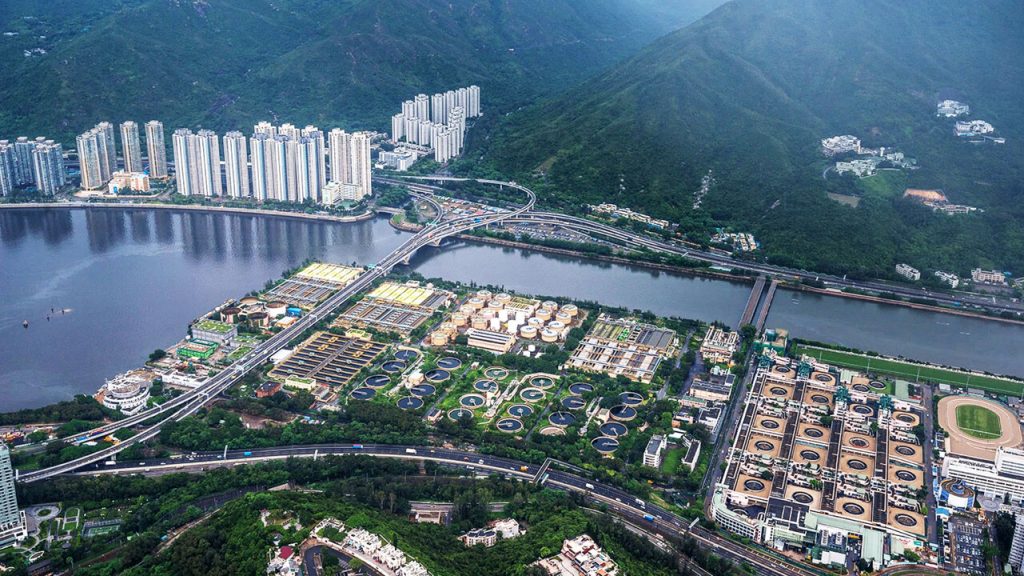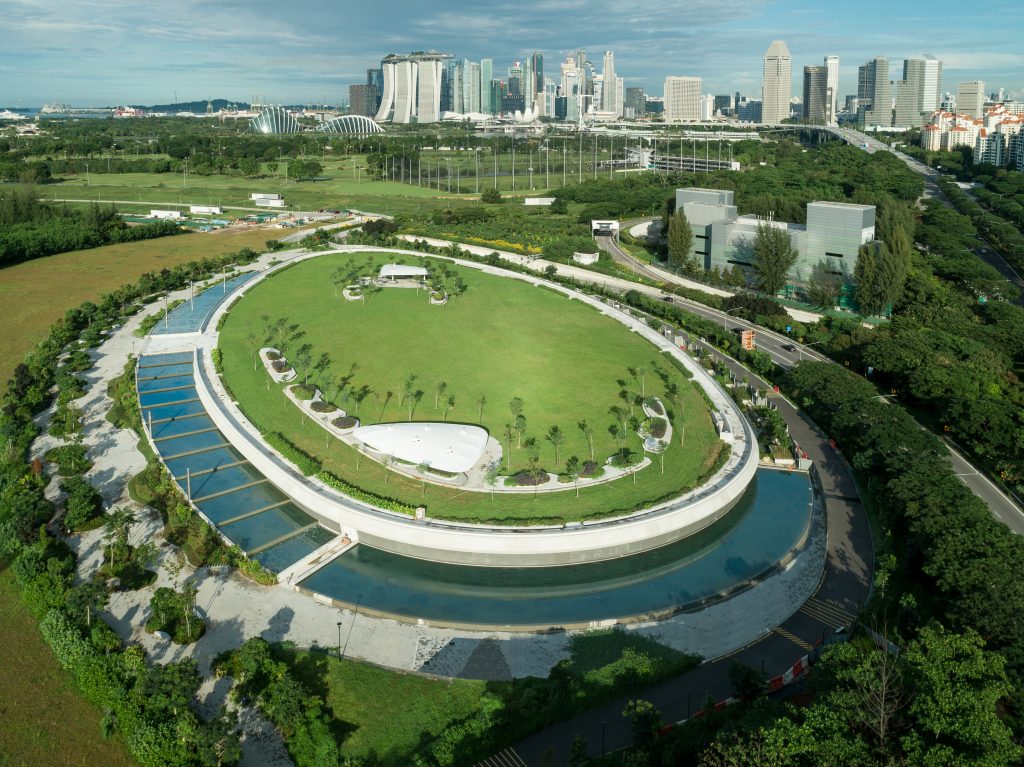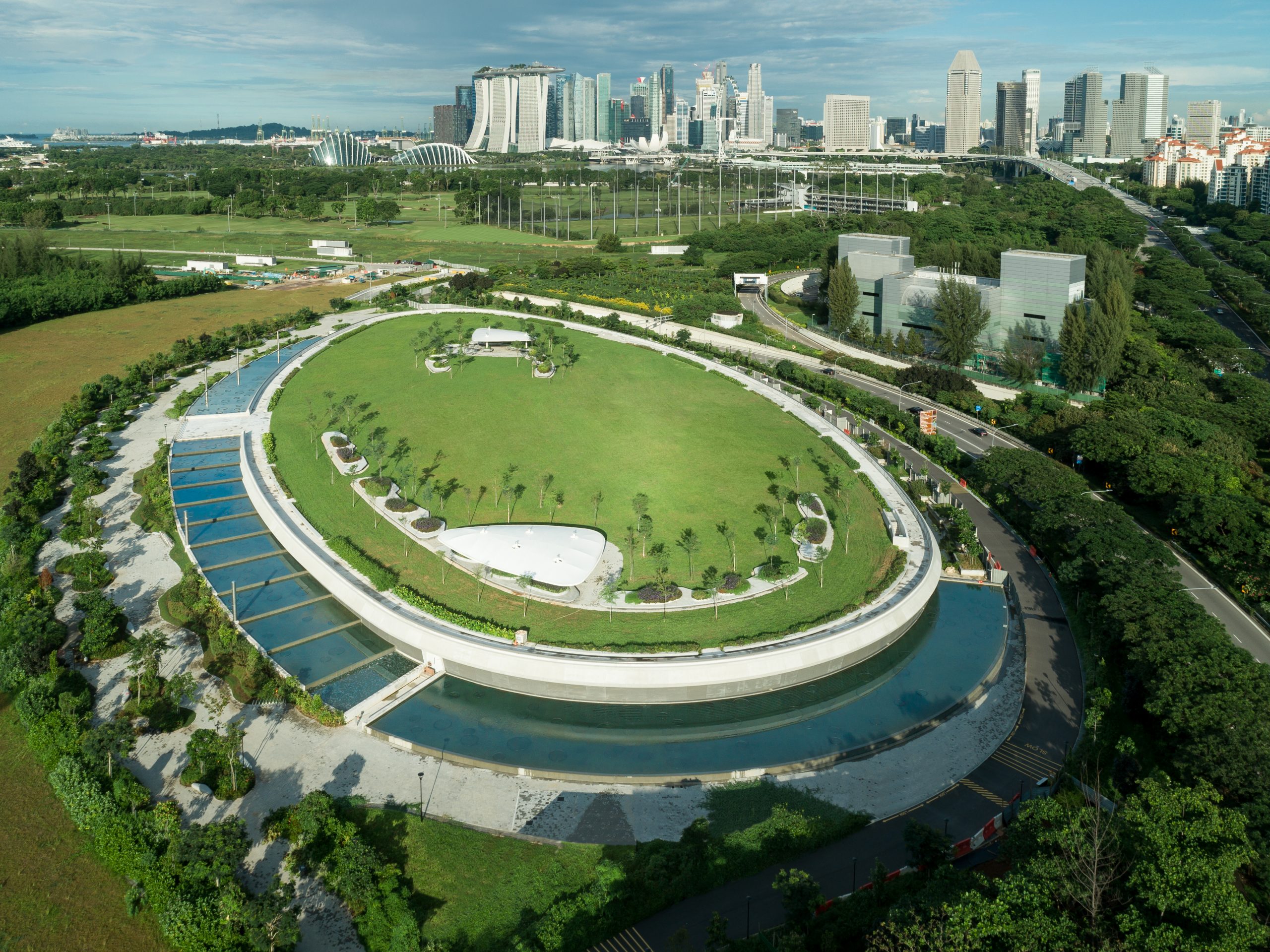AECOM – Uplifting Communities, Improving Access and Sustaining our Planet
AECOM is one of the world’s trusted infrastructure consulting firms. The company believes infrastructure can create opportunity for everyone, uplifting communities, improving access and sustaining our planet. From flood protection to nutrient control to desalination, AECOM’s goal is to ensure that its water clients have access to globally sustainable technologies. AECOM works with clients across entire project life cycle, from initial planning studies through final construction and operations and maintenance services.
Asian Water had the opportunity to meet virtually with Dr Beverley Stinson, AECOM’s Global Water Chief Executive, where we talked about water infrastructure, sustainable water supply and coastal resiliency especially in the Asia Pacific region.

Asian Water: As one of the leading infrastructure consulting firms, your company believes that infrastructure creates opportunities in uplifting communities improving access and sustaining our planet. Can you just briefly describe how AECOM takes advantage of the opportunity, particularly in the water infrastructure?
Dr Beverley Stinson: We strongly believe in that mission. We truly believe that our role in infrastructure is to provide positive social and environmental outcomes and so that does mean uplifting communities, improving equitable access to opportunities for all and sustaining our planet through many factors, such as, how we do our work but also reducing our carbon footprint and supporting the global biodiversity framework and so forth. We focus on our work as on the positive outcomes that we’re seeking from the infrastructure that we’re doing, and this is done in complete collaboration with our clients.
There are many positive outcomes from the work that we do, particularly in the water world. For example, in Singapore, the deep tunnel sewerage system (DTSS) project is in itself a mission to create a sustainable water supply and enhance the communities. We are building a new water reclamation treatment facility on the West side of the island, while at the same time, we are supporting the upgrades of two other facilities in the north and east of the island. These projects enable Singapore’s PUB to decommission two (or three) existing water reclamation treatment plants that are currently within residential communities, thus making these areas available for the communities to decide on the future direction of the use of the lands.
I believe our infrastructure works, especially on transportation, help uplift and connect communities, where there are greater equitable access to jobs, education and healthcare. Therefore, I truly believe that infrastructure is the underpinning of society. It is the thing by which we can create the type of society we want and it opens doors for communities and improves our environment for biodiversity.
Another good example is the Sha Tin Sewage Treatment Works (STSTW) in Hong Kong. The facility will be moved away from the waterfront, thus opening up an entire waterfront for mixed dwelling and commercial development. It will provide improved air treatment and water quality, out of sight from the community.

Relocation of Sha Tin Sewage Treatment Works to Caverns (Photos: AECOM)
Asian Water: How do you view the development of water infrastructure in the Asia Pacific region and what are the opportunities that are available in the region?
Dr Beverley Stinson: First, let me give you my sense of all of what I see as global trends that impact the type of infrastructure that AECOM has to offer. I can see the intensification of urbanization and the relocation of people to urban dwelling. In general, about 75% of the world’s population will reside in urban environments.
Oddly enough, the water infrastructure in the Asia Pacific region has a very interesting unique feature. Despite the population growth and urbanization, there is a greater awareness of the need and the value of enhanced urban green livable cities and sustainable environment and this is where we see Asia Pacific leading the world in the realization of the impact of climate change and the need to protect the communities from floods, rising sea level and coastal resiliency.
Another trend that I see in Asia is the movement towards decarbonization by reducing carbon footprint, reversing and mitigating the impacts of climate change. There is a great deal of effort being done to reduce energy demand, recovering energy and net zero living in the region. I can see that in Asia and everywhere else, there is a desire in the water infrastructure to improve and increase the water treatment levels to reduce the impact on the environment.
I feel that Asians are at the very front lines of thought leadership in this sense. The water infrastructure in Asia, particularly in Singapore, Malaysia and Hong Kong, we see more attention and emphasis on water recovery, water reuse, net zero and energy reduction and recovery. These set a precedent and are being adopted in other parts of the world. For example, in Southern California where there were extreme droughts, these principles of recovery and reusing water that are practiced in Asia are being adopted, in fact, they have gone a little further by approving guidelines to direct particle drinking and treating that water to absolute pure water and injecting it back into the drinking water system.
Our participation in the recent Singapore International Water Week has been fruitful and collaborative where we shared and discussed knowledge and thought leadership on how we can support the industry to a more sustainable and resilient water future in Asia and globally through innovations and solutions.
Asian Water: How does AECOM provide the necessary infrastructure solution in Singapore, being an urban city state with no natural source of water and surrounded by sea?
Dr Beverley Stinson: There are a few elements involved in providing the necessary infrastructure solutions towards water reliability, sustainability, climate and coastal resiliency, energy neutrality and rising sea levels, among others. AECOM supports Singapore’s PUB in its mission to achieve sustainable drinking water supply. In the past, Singapore depended on Malaysia for their water supply and with Malaysia’s own rising water demand, Singapore has to find a way to be independent in this regard. Much of the work has gone towards capturing as much rainwater as possible and turning it back into pristine water and also striving towards providing desalinated water.
One of the marquee projects that we have executed here is the Keppel Marina East Desalination Plant (KMEDP) which is very unique and one of the largest of its kind. The facility is one of the first that is able to take different sources of water to desalinate, with the ability to treat both freshwater and seawater, depending on the weather.

Keppel Marina East Desalination Plant
Also, the other part of your question, regarding Singapore being surrounded by sea, indicates the importance of coastal resiliency. Singapore’s PUB is actively looking at how they can protect the country’s coastline, not just by putting in gray infrastructure (submerged sea walls), but also through green infrastructure (nature- based solutions). A big part of the work that AECOM and Singapore’s PUB are doing involve looking at how our solutions can help protect the coasts of the country and provide a better green natural biodiversity. The same has been done recently in New York City where we have put in submerged or hidden seawalls within parklands. The seawalls are not permanent and deployable structures that operate during a time of necessity. These have been successful in urban environments, such as in New York City and the financial district in Battery Park, in preventing flooding that causes risk of life and significant property damage, and also damage to other systems such as the power system.
Asian Water: Rising water demands and flash floods are some of the problems faced by major cities, including Singapore. What are the methods that are available for water collection and flood prevention?
Dr Beverley Stinson: There is an irony there. We need water but we don’t want it to all come in one minute. This is a widespread problem and when looking into cities such as Toronto, New York City, Detroit and other cities around the world today, climate change is taking effect. For example, the drought in Europe like nothing they have experienced before then getting huge cloudbursts with massive deluge of water in a short period of time is making communities think differently about their stands in water collection and flood prevention. Many are beginning to think about building large tunnels or channels to collect valuable rainwater.
The LA county in Southern California has started a major programme which is supported by AECOM on capturing rainwater, treating it and putting it into the groundwater banking for later use and to offset the impacts of drought. AECOM is working on a master plan with the local metropolitan water district to supply water to over 20 million people using water from the Colorado River. This is probably going to be one of the largest water reuse programmes in the world, following in the footsteps of Singapore and other Asian nations.
At the same time, AECOM also assists in preventing flooding by increasing our nature-based solutions and providing natural infiltration into groundwater. These approaches not only provide a more resilient water supply but also a massive beautification of the urban environment, where we have more greens instead of gray, reducing the temperatures in the cities.
Asian Water: Is rainwater harvesting the only solution to limited water supply or is there any other solutions that are available?
Dr Beverley Stinson: Harvesting rainwater is definitely one of the many tools in the toolbox for sustainable water supply but it is not something that we can predict with certainty, therefore we must maximize the harvesting of rainwater when it is there and we also need to be ready to provide the demand for water supply when it is not there. This is why we must complement rainwater harvesting with solutions such as reuse and recovery of water, desalination and recovery of groundwater. These different approaches lead to providing resiliency in water supply.
Asian Water: In addition to protecting coastal lines, we have the added challenge of protecting the natural habitat. 70% of Singapore’s coastline is protected by sea walls and stone embankments, how do these manmade structures affect the surrounding underwater habitats? Are there other innovative ways that Singapore can protect its coastlines?
Dr Beverley Stinson: This is a renaissance in Singapore’s coastline protection and PUB has established an organization dedicated to understanding how best to protect the city against sea level rise as well as to protect the nature and environment. This is where we get back to the many approaches of how we can create infrastructure solutions that bring greater beauty to the coastline and accessibility to the ocean by installing submerged seawalls, and nature-based solutions by recovering the mangroves and making sure that those mud flats are maintained. We have many different projects that encourage biodiversity and green-gray balance, not just in Singapore. So there are places where it is more sensible to leave it as a natural area where we maintain the biodiversity, with its natural flooding, drying and tidal zones, and in some places where there is a need for some infrastructure that is almost unnoticed to the community.
New Orleans is a great example. The area had suffered from tremendous flooding from Hurricane Katrina. It is one of the most exciting projects that AECOM has participated in is the restoration of the wetlands around New Orleans. We are now rebuilding about 11,000 acres of nature-based wetlands by collecting the sediments that come from the Mississippi River, re-entering those sediments to create a natural ecosystem between freshwater and saltwater and encouraging the recreation of the wetlands and biodiversity that was there. As a result, the city will be protected against sudden surges in the ocean and tidal impacts, thus providing greater resiliency in times of hurricanes and of course, it is much more beautiful with a diversity of life forms, both in flora and fauna, that always existed between freshwater and saltwater.
Asian Water: My last question is what are your hopes for the water infrastructure development in the Asia Pacific region?
Dr Beverley Stinson: I think our hopes are very much like everyone else’s hopes. AECOM embraces infrastructure and the future of water infrastructure to be something that has significant social value and to enhance social outcomes. Our number one mission is not to build water treatment plants, but we set out with a mission to bring sustainable and reliable water supply, to enhance the economic development, security and well-being of our communities. We believe that we can help through our infrastructure solutions. Southeast Asia has moved into being one of the top 500 economies, so we want to be a part of that economic well-being, achieving efficiency, decarbonization and making sure that whatever we do is sustainable.
Another mission that AECOM is proud of is our global biodiversity mission. This is something that our CEO Troy Rudd is proud of when AECOM received the Terra Carta seal in early 2023. He has been very supportive of AECOM being much more aware and sensitive to biodiversity and water. In fact, we have created some digital tools to help protect biodiversity in our world. Smart infrastructure and good use of digital knowledge are some of the futures that we hope for. It will help us make better and more informed decisions so that we can get better and more efficient outcomes. I think this aligns with the hopes of Asia Pacific region. AW

